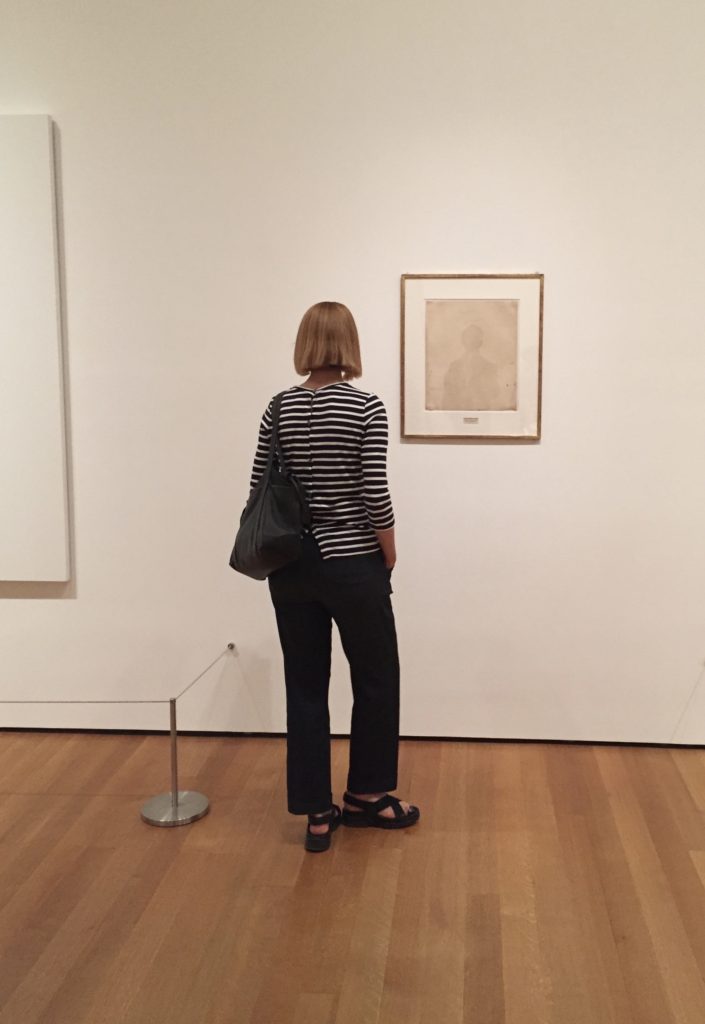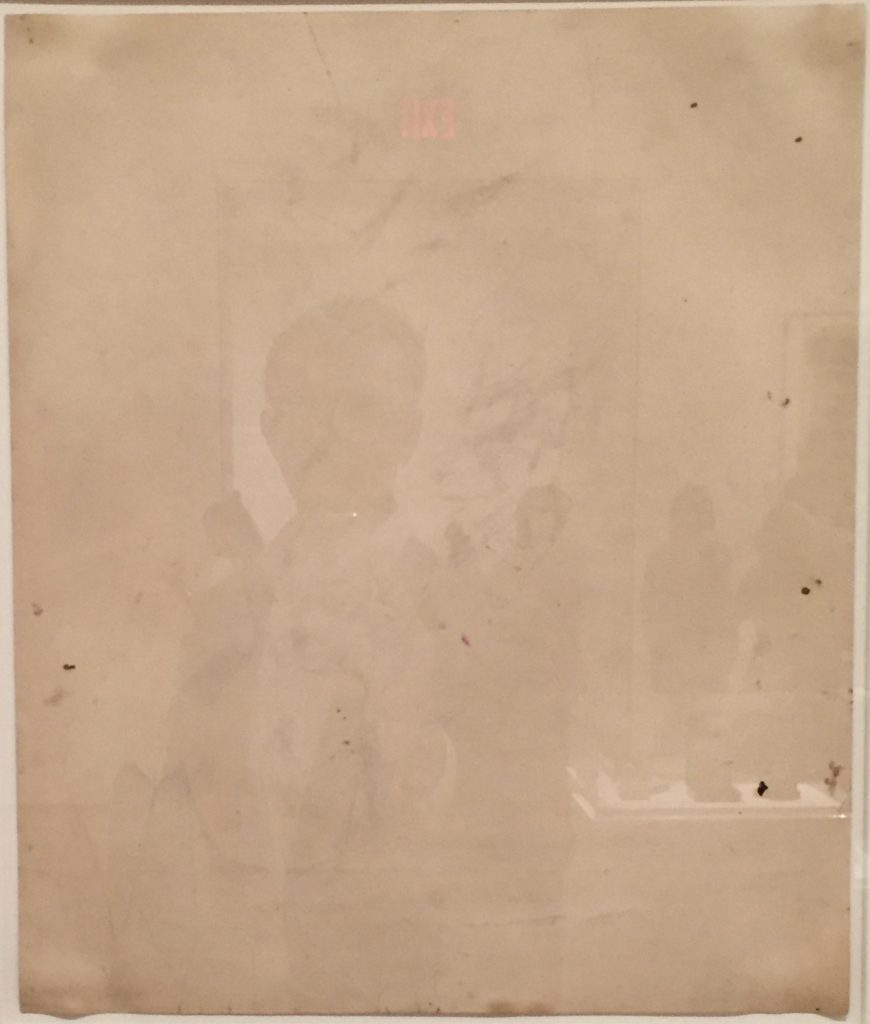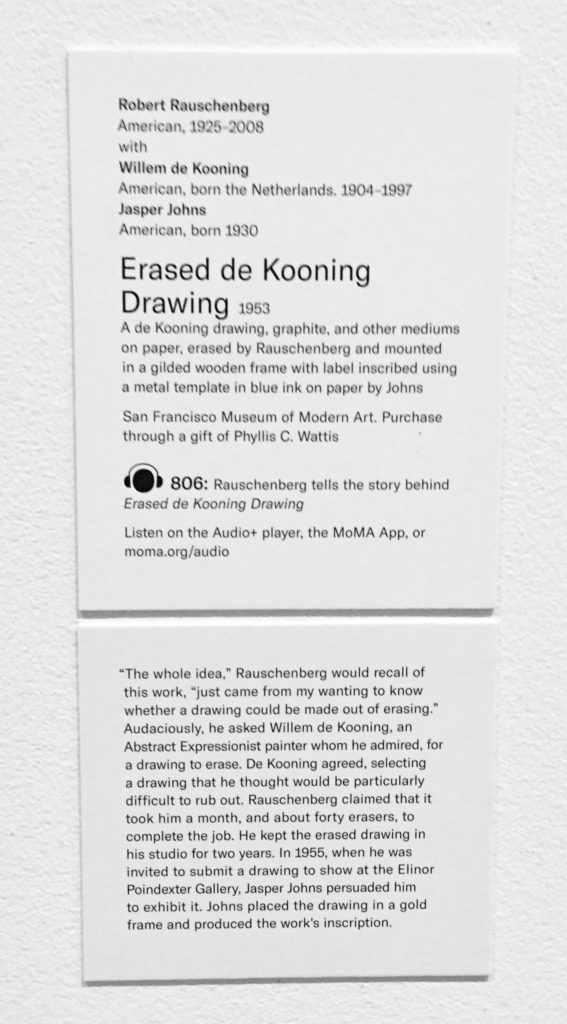.
The 2017 Robert Rauschenberg restrospective at the Museum of Modern Art (Robert Rauschenberg: Among Friends) included a notorious early work entitled Erased de Kooning Drawing (1953). As explained in information supplied on the museum wall, Rauschenberg’s idea was to test “whether a drawing could be created out of erasing.”
Here are my initial photos of the piece and related wall text.
.
 Rauschenberg, Erased de Kooning Drawing, MOMA, June 15, 2017, 3:37:08 PM
Rauschenberg, Erased de Kooning Drawing, MOMA, June 15, 2017, 3:37:08 PM
.
As I waited to get a closer, one-on-one encounter with the picture itself, I began to see why capturing a clean shot of the erasing — a clean shot at nothing — was impossible. The frame’s glazing reflected objects elsewhere in the room, such as a display case in the middle of the gallery, a red EXIT sign on the opposite wall, and visitors as they came and went. Viewers who halted directly in front of the drawing were met with reflections of themselves. They became part of the artwork. This phenomenon, while probably not in Rauschenberg’s plan for this particular piece, is satisfyingly consistent with the participatory element of his artistic practice.*
So I like to think Rauschenberg would have welcomed me occupying his picture, briefly, as a ghost-like silhouette:
.
 Rauschenberg, Erased de Kooning Drawing, MOMA, June 15, 2017 at 3:38:30 PM
Rauschenberg, Erased de Kooning Drawing, MOMA, June 15, 2017 at 3:38:30 PM
.
– – – – – – – – –
* For example, Rauschenberg’s 1951 White Paintings and their subsequent incarnations were meant to be receptive surfaces registering light and shadow effects generated within their surrounding space — including shadows of viewers. Numerous times the artist included mirrors and other reflective materials in his Combines, Spreads, and other series, to the same end.
.
Tags: Erased de Kooning, Jasper Johns, MOMA, Museum of Modern Art, Rauschenberg, Robert Rauschenberg
